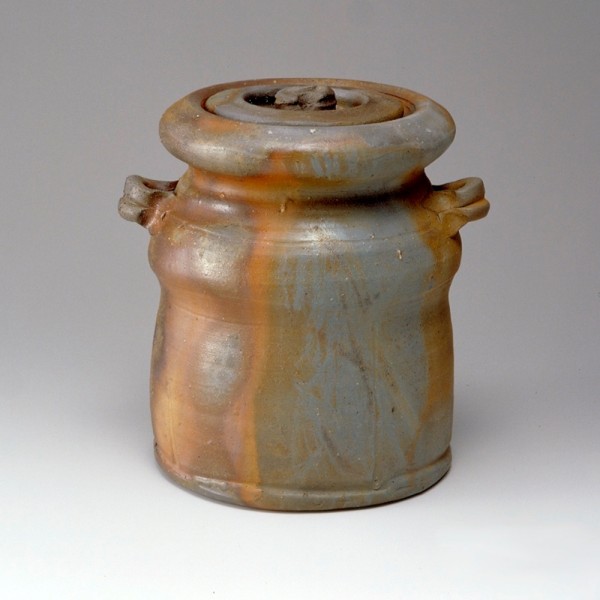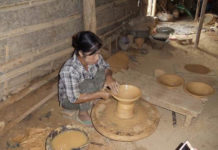Bizen is one of Japan’s six most famous kilns with a history going back some one thousand years to the Heian period (794-1185) when this ware was already in production.
At the end of the Muromachi period (1392-1573), the rustic, undecorated qualities of this ware met with particular favour among the tea fraternity, resulting in the making of many tea bowls and other articles for tea ceremony use. Bizen Yaki became more widely known with the protection of the local clan from about the middle of the eighteenth century. And this ware has thrived ever since, with a number of Bizen potters including Kanashige, Fujiwara Kei, and Yamamoto Toshu being recognized officially as Living National Treasures in the early part of the Showa period (1926-1989).
The attributes of Bizen are many. Its natural look and warmth are expressive of the very earth from which it comes. Pieces of Bizen can also be used in so many ways. The delicate flavours of sake are not lost when stored in a Bizen flask and flowers in a Bizen vase last three times longer, while water kept in it remains fresh for much longer. But what is really special about Bizen Yaki is the happy accidents which occur during firing. No two pieces of Bizen Yaki are the same, the accidents which happen during firing often producing unexpected changes of colour and surface effect.
The clay called hiyose is obtained from Imbe and is found 2-3 metres at the bottom of rice fields. It is sticky and had a high iron content. Vessels are formed on the wheel and often incised. No glaze is applied and the vessel is wood-fired with red pine at a temperature of about 1230 degrees. The firing lasts 10-14 days. Various effects can be made with the arrangement of wood, straw and the placement of the vessels themselves. By the eighth day, charcoal is often thrown in the kiln which creates dark patterns on the vessels. After firing, the vessels are polished with paper and stone. Bizenware is known for its yohen (colour variations).
Bizenware can be found in the Traditional Industry Hall in Imbe Station and the Okayama Prefectural Bizen Ceramics Museum.
Further reference
Cooperative association Okayama prefecture Bizen ware ceramite association |
This entry is referenced from the website of The Association for the Promotion of Traditional Craft Industries.





